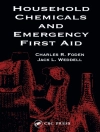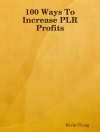‘Superior … A broad-ranging guide that explains the global power structure over the last eight decades’ Carlos Marichal, El Colegio de México
‘Covering the history of the Bank from its early days as a prop to European colonialism through the Rwandan genocide, the Washington Consensus and the Iraq war, Toussaint argues that the Bank is incorrigible and should be abolished. Read and judge for yourselves’ James K. Galbraith, author, Welcome to the Poisoned Chalice: The Destruction of Greece and the Future of Europe
‘Invites fresh thinking on the need to streamline human rights considerations into lending. Recommended reading’ Andrés Solimano, founder, International Center for Globalization and Development
In 1944, the Bretton Woods Conference ushered in a new international economic order. The World Bank emerged as one of the most powerful financial institutions in the world, and a new colonial authority in all but name. But how does it operate, who funds it, and what agenda does it work to promote?
In The World Bank: A Critical History, Éric Toussaint answers all of these questions and more. Offering up a highly readable yet uniquely authoritative account, the book analyses the Bank from its beginnings to the present day. Chapters on gender, climate and the pandemic era provide the reader with a truly contemporary, definitive text.
Seven international case studies illustrate the impact of World Bank policy, and Toussaint also explores the political, economic and strategic motives of the US government with regard to the World Bank. The book concludes with a proposal for replacing the World Bank, IMF and WTO with new, multilateral and democratic institutions.
Éric Toussaint is a historian and political scientist. He is spokesperson for the Committee for the Abolition of Illegitimate Debt, of which he is one of the founding members. He is the author or co-author of numerous books including Bankocracy, The Life and Crimes of an Exemplary Man, and Debt, the IMF, and the World Bank: Sixty Questions, Sixty Answers. His books have been translated into more than a dozen languages.
Table of Content
Foreword
Terminology: South/North – Developing/Developed. Just What Are We Talking About?
Chapter 1 – The Origins of the Bretton Woods Institutions
Chapter 2 – The First Years of the World Bank (1946-1962)
Chapter 3 – Difficult Beginnings Between the Un and the World Bank
Chapter 4 –The Post-world War II Context – the Marshall Plan and the London Agreement on
Germany’s Debt
Chapter 5 – A Bank Under Influence
Chapter 6 –World Bank and IMF Support for Dictatorships
Chapter 7 – The World Bank and the Philippines (1946–1990)
Chapter 8 – The World Bank’s Support for the Dictatorship in Turkey
Chapter 9 – The Bank in Indonesia: a Textbook Case of Intervention
Chapter 10 – The World Bank’s Theoretical Falsehoods Regarding Development
Chapter 11 – South Korea: the “miracle” Unmasked
Chapter 12 – The Debt Trap
Chapter 13 – The World Bank Saw the Debt Crisis Looming
Chapter 14 – The Mexican Debt Crisis and the World Bank
Chapter 15 – The World Bank and the IMF: the Creditors’ Enforcers
Chapter 16 – Presidents Barber Conable and Lewis Preston (1986-1995)
Chapter 17 – Rwanda: the Genocide’s Financiers
Chapter 18 – James Wolfensohn Switches on the Charm (1995-2005)
Chapter 19 – Debates in Washington at the Start of the Twenty-first Century
Chapter 20 – Structural Adjustment and the Washington Consensus Were Not Abandoned in 2000
Chapter 21 – Climate and the Environmental Crisis: Sorcerer’s Apprentices at the World Bank and the IMF
Chapter 22 – Paul Wolfowitz (2005–2007): an Architect of the Invasion of Iraq at the Head of the World Bank
Chapter 23 – Ecuador: Progress and the Limits of Resistance to the Policies of the World Bank, the IMF and Other Creditors
Chapter 24 – The US President’s Men Keep Control of the World Bank
Chapter 25 – The IMF and the World Bank in the Time of Coronavirus: the Failed Campaign for a New Image
Chapter 26 – The World Bank Did Not Foresee the Arab Spring Popular Uprisings and Still Promotes the Very Same Policies That Triggered Them
Chapter 27 – The “Gender Equity” Farce: a Feminist Reading of World Bank Policies
Chapter 28 – The World Bank and Human Rights
Chapter 29 – Time to Put an End to World Bank Impunity
Chapter 30 – The Case for Abolishing and Replacing the IMF and the World Bank
Annexes
Annex 1: The World Bank: an ABC
Annex 2: The International Monetary Fund (IMF): an ABC Glossary
Bibliography of Works Cited
Works by Eric Toussaint Published in English
Table of Tables
Table of Graphs
About the author
Gilbert Achcar teaches at the School of Oriental and African Studies.












